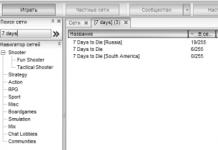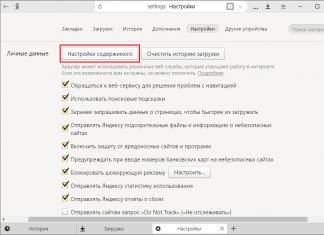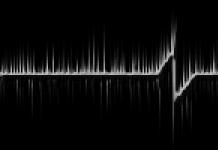Nowadays you won’t surprise anyone with the presence of a camera; all laptops, tablets and smartphones are equipped with them. Some are capable of taking photographs that are not inferior in quality to professional cameras. The article provides information about the front camera, which is designed for shooting using the front panel of the gadget.
What is a front camera and why is it needed?
There are two types of cameras: main and front. The front camera is the one located on the front panel of the gadget. Usually the front camera is slightly inferior in quality to the main one; for example, if the resolution of the main one is 8 megapixels, then the front one will most likely be about 5 megapixels.
The front camera is designed for making video calls, that is, when communicating via Skype or similar programs, the interlocutors see each other using these cameras. Therefore, before turning on the front camera, it would be good to get yourself in order.
Taking selfies has become very popular lately. For those who don’t know, this is a self-portrait, that is, after you turn on the front camera, you take pictures of your loved one.
How to enable the front camera on your phone?
When it comes to video calling, usually the front camera turns on automatically. This is especially true for laptops. But sometimes on tablets and smartphones you still have to do it manually.

Let's say you are communicating with a friend via WhatsApp or Skype, but the interlocutor does not see you or sees a completely different image instead of your face, that is, the main camera is turned on. How to turn on the front camera in this case? You need to find the icon indicating the camera and click on it. Usually after this there is a camera change.
If you intend to take a photo of yourself and are wondering how to turn on the front camera on an Android smartphone, the approximate procedure is as follows:
- activate (unlock) the smartphone screen;
- find the camera icon on the desktop or in the main menu;
- By default, on all Android gadgets the main camera is turned on first. In shooting mode, there should be a camera icon on the screen with two arrows that go around it, click on it.
That's all, now you know how to turn on the front camera. The interface of smartphones and tablets based on Android is approximately the same, so this guide is valid for all gadgets.
How to enable the front camera on iPhone?
So, a guide to working with smartphones and tablets based on iOS:
- Find the gray icon with a camera in the middle in the main menu and activate it. If you are interested in how to quickly turn on the front camera on an iPhone, we recommend using an additional function. In cases where you urgently need to turn on the camera, just swipe left on the lock screen.
- In the screen that appears, there is an icon with two arrows (lower right corner), click on it if you want to take a selfie.
- At the very bottom there is a round white button, and above it is a horizontal list of all available shooting modes. To take a standard photo, set the photo mode and press the round button.
- To shoot video, set the video mode and press the white button again.

Well, that's all, actually. If you wish, you can edit the resulting photos at your discretion in the “Settings” tab.
Read our article for detailed instructions on how to set up a camera on a phone or tablet based on . Simple explanations for unclear settings.
Are you disappointed in yours because of low-quality photos? Have you tried setting up the pre-installed Camera application? If you do not know the meaning of some points, then read our article. We will try to help you achieve the best quality photos.
Nowadays you won’t find smartphones on sale without a built-in camera. The operation of this module is ensured by a pre-installed application. This could be Google Camera, or something from the smartphone manufacturer. In any case, the program will be tailored for automatic shooting. However, there are also some manual settings in the “Camera”. And you need to use them - otherwise you won’t always get good shots.
How to set up a camera on your phoneBut first, you should understand that the quality of photos depends not only on the settings. No matter how trivial it may sound, before pressing the shutter button you need to do a little preparation:
- Clean the lens lens- this element is prone to fogging and becoming covered with all sorts of dirt. It’s not for nothing that professional photographers constantly carry a clean cloth with them to wipe their optics.
- Try to find the right angle- do not shoot against the sun, as the tiny smartphone matrix will not have enough dynamic range. And try to ensure that the viewer's gaze follows from the upper right to the lower left corner of the final photo (unless you are shooting a portrait).
- Turn on self-timer or voice control- this rule must be followed in poor lighting conditions. The fact is that touching the shutter button will slightly shake the smartphone, and with a long exposure this will lead to blurring of the image.
- Try to shoot with the rear (main) camera- in most cases, it has a larger matrix, higher resolution, and better sensitivity. A monopod with a mirror allows you to take selfies with the rear camera.
- Forget about digital zoom- throw these thoughts out of your head! If you need to zoom in on the picture, just walk up to the object. Some modern smartphones have optical zoom (dual cameras have lenses with different focal lengths) - you can use it.
But stop thinking about preparation! It's time to talk about how to set up the camera on your phone.
How to set up a camera on your phone: Global settings
The existing Camera settings can be divided into two categories. The first includes parameters that globally influence the final result. They are located in a special section, access to which is provided after clicking on the “Settings” icon (in the application itself, of course). The second category includes the parameters of the shooting itself - shutter speed, ISO, white balance, etc. First, let's look at what awaits you in the menu called “Settings”:
- Image Size- this parameter determines how many pixels the photo will consist of. This item may also be called “photo resolution”. Feel free to choose the most affordable option.
- Video size- or his permission. Likewise, choose the highest setting (or, in extreme cases, HD). Please note that at the highest resolution, some shooting modes may not be available - for example, high-speed video.
- Video frequency- determines the speed at which it will be written. The higher the parameter, the smoother the picture will be. The optimal choice is 50 or 60 fps. But cheap smartphones do not have enough processor power for such high-speed shooting, in which case you will have to make do with a smaller parameter.
- Browse Images- If you activate this switch, then after pressing the shutter button you will see the final image. They will appear for a few seconds. If the switch is not active, then you can instantly take the next frame, and the photo will immediately go to the “Gallery”.
- Timer- or self-timer. After pressing the shutter button, the number of seconds you select passes, after which the frame is taken.
- Net- its display allows you to align the horizon line. Of course, there will be no grid in the final photo.
- Photo quality- this parameter determines how much the image will be compressed. Select "Maximum quality" - then you will get the best result. Other parameters may lead to some blurring of the image.
- Geotagging- this switch determines whether the geographic coordinates of the shooting location will be included in the photo tags.
- Storage- select “SD card”, if your device has one.
- Anti-flicker– fluorescent lamps in different countries flicker at different frequencies. This setting allows you to suppress the flicker effect, but you need to select a specific frequency - 50 or 60 Hz.
- Voice control- this item is not available in every smartphone. This feature involves shooting using a voice command.
- Volume key- determines what actions are assigned to the corresponding button during shooting. For example, it can become an additional shutter button. Or pressing it will start video recording.
- Gesture control- another shooting method implemented in some smartphones. For example, a raised hand or a smile can start the self-timer.
- Optical stabilization- enabled on some devices. It allows you to make the shutter speed longer without increasing the risk of blurring the frame. But the effect of the stabilizer is best seen when shooting video.
These are the main parameters contained in the corresponding section of the standard Camera application. Understanding and correctly applying certain settings will help you solve the issue of how to set up the camera on your phone. But some smartphones have additional settings - it all depends on the imagination of the manufacturer and his skills.
Manual settings
 how to set up a camera on your phone: manual settings
how to set up a camera on your phone: manual settings If you want to get great shots, then you must wean yourself from constantly using automatic mode. We can spend hours telling you how to set up the camera on your phone, but if you only use presets, this will not help you much in difficult cases. In difficult shooting conditions, try to adjust certain settings, which are often available right during framing.
- Flash- can be disabled, forced enabled or run in automatic mode. In the third case, the system itself will decide whether to activate the flash now. The result of its work depends on the specific implementation and shooting conditions. Sometime it can really save a picture, but in other cases its use only spoils the frame.
- ISO- the so-called photosensitivity. As the frame increases, more energy is supplied to the matrix, as a result of which data is read from it a little better. But in return, the image may receive a certain amount of digital noise - random flickering dots. The noise is most noticeable when viewing a photo at 100 percent zoom. You should only think about ISO in low light conditions; you definitely shouldn’t increase this parameter too much, otherwise the result will unpleasantly surprise you.
- Excerpt- Adjustable only on some smartphones. This parameter refers to how long the aperture will be open. The longer, the more light the matrix will receive. But if you overdo it, overexposure will occur.
- Exposition- marked with an icon in the form of a square with a plus and a minus. This is the easiest way to make a shot lighter or darker.
- Diaphragm- the degree of its opening is regulated only on some devices. Again, the diameter of the hole determines how much light will enter the frame.
- Exposure metering- this determines exactly how the system will determine how light the frame is.
- White balance- makes the image warmer or cooler. Usually, automation copes with its task without human intervention. But if you are shooting in unusual lighting conditions, then it is better to select one or another white balance manually.
- HDR- when this function is enabled, the camera will create several frames at once with different exposures. Then all this is combined into one image, from which areas that are too dark and overexposed are excluded. But it takes time to take multiple frames, so you don't need to photograph moving objects in HDR mode.
These are a few settings that can usually be selected while shooting. But almost any Camera application also provides different operating modes. We should talk about this too.
Camera shooting modes on phones

By default, the application activates regular photography. In it you can switch to the front camera. Or go to video shooting. In addition, the application provides several other shooting modes:
- Panorama- this mode is ideal for shooting natural and city landscapes. It automatically creates several pictures, after which they are stitched into one frame. The result is a very wide photograph that allows you to see the area around you in detail.
- Beauty shooting- when this mode is activated, the application will try to smooth out the skin and make other improvements to the image. The mode is primarily designed for shooting with the front camera.
- Blur background- shooting in this mode can be implemented in different ways. Smartphones with a dual camera are best able to blur the background. If the device has only one lens, then the background is blurred either by software or after a certain movement of the device from top to bottom.
- GIF animation- in fact, video is shot in this mode, but with a frequency of only about one frame per second. The resulting images are combined into one GIF animation, which you can then post on a social network.
- Continuous shooting- in this mode, you can take several frames at once in a second (their exact number is affected by processor power). You can then select the best shot, or keep them all in memory. A good mode for shooting children, cars, sports and other active scenes.
- Night- special mode for shooting in low light conditions. It automatically increases light sensitivity and makes the shutter speed longer.
- High-speed shooting (slow-mo)- smartphones with a very powerful processor have this mode. The mode is used when shooting video. The camera in it takes a very large number of frames per second. The video can then be slowed down, allowing the subject's movements to be seen in great detail.
These are the most popular modes found in standard Camera applications. There are also some specific modes, but there is little point in talking about them in a short article.
Conclusion
Now you know what certain camera settings are responsible for. Act wisely - this way you will get the most out of even the simplest smartphone or tablet! And don’t forget that you can always download more functional camera apps on Google Play.
The cameras of modern smartphones are already directly approaching the quality of shooting of professional devices. But this, as a rule, only applies to phones in the upper price range. With simpler devices, everything is not so simple (although for most cases they are more than enough). At the same time, the shooting quality of any camera on almost any smartphone can be significantly improved. You just need to use a couple of tips that we will share with you right now.
This is perhaps one of the most obvious solutions. But also one of the most effective. At the same time, lenses for smartphone cameras, as a rule, are not as bulky as DSLR lenses. And you can easily carry several of them in your pocket at once: a wide-angle lens, a fisheye lens, a macro lens, and so on. This will help you achieve incredible photo quality that cannot be achieved with standard methods.
Use manual settings when shooting
In order to achieve the best quality of your photos, it is much more productive not to rely on automation, but to set all the settings yourself: shutter speed, white balance, light sensitivity, and so on. At the same time, unlike “big” cameras, the picture settings on smartphones are not so complicated and understanding them will be as easy as shelling pears. So experiment with the settings and you'll be surprised how much the quality of your photos can improve.
Try a third-party photo app
There are plenty of apps that can take your smartphone photography to the next level. The most interesting thing, in our humble opinion, is the VSCO application. It has many powerful tools for adjusting quality and setting photo parameters, as well as an extensive gallery of filters and excellent ways to edit finished photos.
Notice the flash
The flash is a weak point for most smartphone cameras. And sometimes it’s better to refuse to use it than to take overexposed photos. Of course, ideally for a good photograph you need to set the light correctly. But even if you're shooting in low light, try taking photos without flash. Perhaps it will turn out much better.
Use a tripod
Many smartphones have a stabilization system, but it does not always work well, so in order not to have an unnecessary reason that can ruin your photo, take a tripod. Well, if you are going to take photographs “handheld”, then you can buy a stabilizer or, at worst, a selfie stick. This way the phone will shake much less. And, accordingly, the final photo will come out much better.
The quality of a photo taken on a phone depends not only on the technical characteristics of the camera, but also on the correct settings and user skills. In the article below we will analyze all aspects of improving the camera on Android: shooting rules, standard application parameters and engineering menu settings. We will also name several third-party programs that expand the capabilities of the lens.
Rules for taking a good photo
Before directly changing camera settings and searching for applications with advanced functionality, you should make sure that the basic shooting rules are followed:
Standard Camera app settings
If you want to know how to improve the quality of the camera on Android, you should pay attention to the settings of the application with which you shoot. Depending on the smartphone manufacturer and the software used in it, the number and location of settings may differ. However, their names and effects will be similar.
So, to improve the camera you will need to set the following parameters:
- Photo and video quality is set to best or maximum. In some smartphones, the parameter is set by resolution or number of megapixels - in any case, you should set the highest possible value.
- Frequency or flicker elimination - the maximum value is set (usually 60 Hz) or automatic detection.
- Shooting mode. These are preset parameters suitable for certain photo creation conditions. For example, you can set the mode to “On the beach” or “In the city”.
- If the preset modes do not give the expected effect, you should switch to manual control and set the parameters according to your own feelings:

- HDR - high dynamic range. With this option activated, the pictures become more saturated, but at the same time the amount of noise may increase.
- Sharpness - determines how well the contours of objects will be visible.
- Saturation is the amount of color. The minimum value is a black and white photo.
- Contrast is the difference between the characteristics of different parts of the image. It's better to set the average.



How to improve the camera on an Android phone through the engineering menu
In some smartphones, you can change camera settings through the engineering menu. Often the parameters presented there mostly repeat those that are already present in the application settings. This method of adjusting photo quality should only be used by people who have adequate knowledge of how to handle electronics.
Instructions:
- Open the dialer and enter the code: *#*#3646633#*#*. Attention! The method for opening the engineering menu may differ depending on the phone model. Detailed recommendations should be sought on specialized forums.
- Go to the “Hardware testing” tab.
- Select the “Camera” section.
- A new window will display parameters that allow you to improve the camera on Android:

- After setting the settings, you can exit the menu and test the camera's capabilities.


After launching DSLR Camera Pro, the user will be able to adjust:
- Flash operation: automatic, constant firing, shooting with the backlight on.
- Focus mode: constant, after releasing the shutter, by clicking on the object, macro photography, face detection.
- White balance.
- ISO value.
- Scenes.
- Image quality and resolution.
- Exhibition and much more.
With such an application, the phone turns into a professional camera on which you can set all parameters manually to get the best result.
HD Camera Pro has similar capabilities. The program is paid - 129 rubles.
Smartphones are now available to absolutely everyone. Even with the worst camera you can take cool pictures. Let's see how to improve the quality of photos on your phone if the camera is not very good?
Basics
The quality of the pictures directly depends on what phone or tablet you shoot with. Not all people can afford to buy a new iPhone or Samsung model. Moreover, many simply do not have the money to purchase a professional camera for taking pictures on Instagram.
Almost every modern person has a phone with a camera, but sometimes they leave much to be desired. If you don’t know how to improve the quality of photos on your phone, iPhone, Android or Samsung, then our 6 simple methods will help you.
Light
Good lighting is the key to great photos. Always take photographs only in good daylight and street lighting. Remember that your subject should always be looking at the light source. If you have additional sources (lamps, flashlights, soft boxes), then don’t be lazy and turn them on.
Lens
Don't forget to wipe the lens of your smartphone with a clean cloth or napkin. This way you will save yourself from blurry, smudged and unclear pictures with dots and dust.
Permission
Every smartphone has basic settings installed as standard. If you want to improve the quality of your photos, then it's worth digging into the settings and turning them to maximum.

Filters
Processing and filters can greatly improve the quality of your photos. but there are filters that improve the photo, and there are those that spoil the quality of the image (Drama, HDR).
A black and white filter hides a large number of defects in a photograph. Make it look like you are a hipster and just see it that way.
Sharpening
Without sharpening, the photo looks a little blurry and of lower quality. Almost every photo editor for your phone has a similar setting. But with an increase in this parameter, the images become clear with detailed details.
Lifehack
If you don’t know whether you can improve the quality of a photo on your phone, just simulate a low-quality photo. You can treat it in some retro styles from the 90s or 2000s with scuffs and noise. Using this effect, no one will even guess that this was not originally intended by you.

WITH ORVI Ovation
Be the most stylish! Use super effects.


























